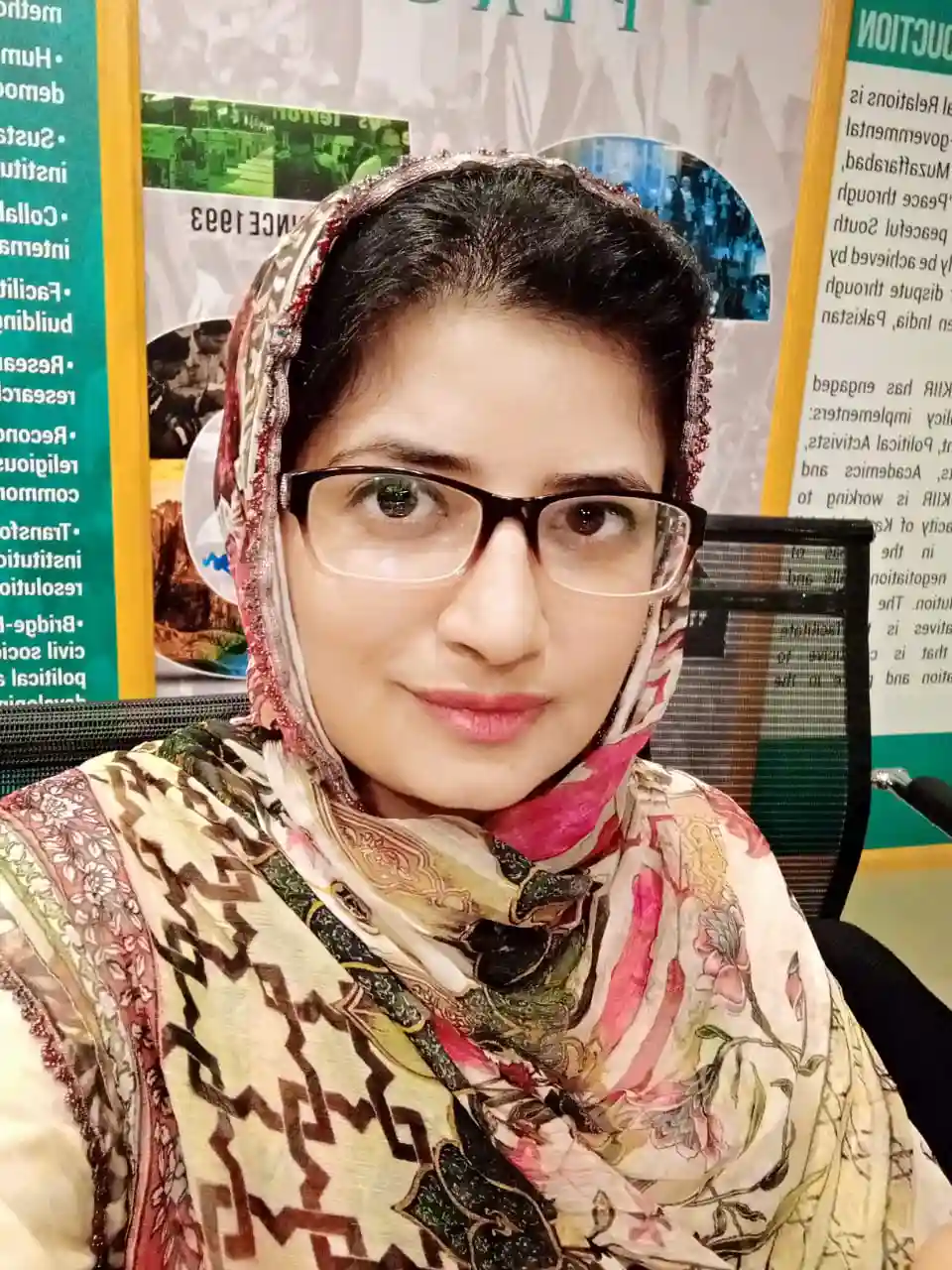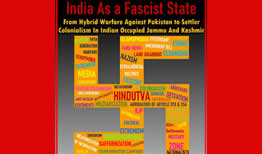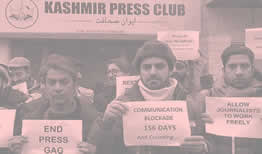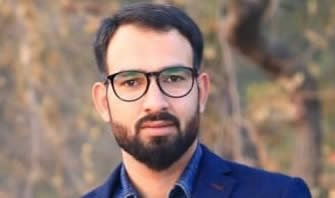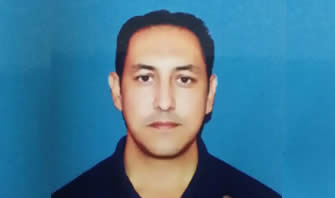The Strategic Evolution of Hindutva Politics
The Strategic Evolution of Hindutva Politics
Abstract
Hindutva, as an ideological and political project, reshapes India’s national identity through exclusionary narratives. Rooted in early 20th-century thought, it combines religious symbolism with calculated political strategy. The movement reinterprets history to place Hindu heritage at the center while pushing pluralist traditions to the margins. Muslims, along with other minorities, are frequently portrayed as outsiders, creating suspicion and division. This narrative construction enables communal mobilization and strength-ens political control.
Old methods such as mythic glorification and historical revisionism are revived and adapted for modern media and election campaigns. Street-level provocations, selective law enforcement and online messaging spread these ideas more widely. False flags like Pulwama and Pahalgam are not isolated acts. They are part of a doctrine, manufacture crisis, sanctify it through culture and weaponize public sentiment. Such tactics erode democratic accountability, destabilize regional peace and expose India’s willingness to manipulate bloodshed for ideological gain. This study examines how these enduring tactics are reshaped to spark new political tensions in India’s current socio-political climate.
Keywords: Hindutva, Muslims, False Flags, Pulwama, Pahalgam, Political Strategy, Political Control, India, Socio-politicOld Masks, New Fires:
The politics of communal provocation in India has a long and disturbing history. While recent incidents involving symbolic manipulation and disguised identities have drawn national at-tention, these are not novel tactics. They can be traced back to the early years of India’s independence, particularly to the efforts by Hindutva-aligned groups to influence public percep-tion and trigger religious conflict. One of the earliest documented references to such methods appears in a 1948 letter from Dr. Rajendra Prasad, who would later become the first President of India.
This alarming correspondence is cited in Nehru-Patel: Agree- ment within Differences, a compilation of select documents edited by Neerja Singh. The quote is more than a historical footnote; it reveals a deliberate strategy of false-flag oper- ations aimed at manufacturing religious hatred, a tactic still employed today in various forms. To understand this behavior, it is essential to revisit the ideo- logical foundation of Hindutva. The term, popularized by V.D. Savarkar in the 1920s, refers not just to Hindu identity, but to a specific vision of India as a Hindu Rashtra (Hindu nation). Savarkar’s 1923 treatise Hindutva: Who is a Hindu? laid the groundwork for defining Indian identity in religious terms, ex-cluding Muslims and Christians as outsiders (Savarkar, 1923). His vision inspired the Rashtriya Swayamsevak Sangh (RSS), founded in 1925, which grew into a powerful paramilitary-style organization promoting cultural nationalism.
In the years leading to Partition and beyond, members of Hindutva organizations saw Muslims not just as a religious minority, but as internal enemies. M.S. Golwalkar, the second RSS chief, referred to Muslims as a “threat” to national unity (Golwalkar, 1939). In his book We, or Our Nationhood Defined, Golwalkar praised Nazi Germany’s handling of minorities and argued that India should emulate its model of cultural homo- geneity.
The use of disguise and provocation is not limited to the early decades. Similar tactics have resurfaced in recent years, no- tably during communal riots where masked individuals par- ticipate in violence while impersonating members of another community. Scholars like Christophe Jaffrelot have extensively documented how Hindutva organizations have adapted histor-ical methods for modern contexts (Jaffrelot, 2007). In his re- search, Jaffrelot describes a pattern of strategic provocations, symbolic manipulations (like the use of the Pakistani flag) and the staging of attacks to blame minorities. Moreover, literary and historical reflections have long ac-knowledged these tactics.
EARLY STRATEGIES: THE IDEOLOGICAL AND POLITICAL ROOTS OF HINDUTVA
The early strategies of Hindutva were not improvised. They were crafted with ideological precision, political purpose and historical calculation. What began as a set of ideas in colonial India gradually evolved into a movement, an ecosystem and eventually a powerful political force. These strategies, center-ing on identity formation, historical grievance, symbolic provocation and cultural indoctrination, laid the groundwork for what we see today in the form of systemic religious exclusion and state-enabled polarization. Understanding how Hindutva was strategically shaped from the beginning is key to understanding the normalization of violence, the targeting of minorities and the steady unraveling of secular democracy in India.
In contrast to India’s constitutional promise of pluralism, early Hindutva ideologues envisioned a nation that would demand cultural sameness. To them, diversity was not strength, it was disorder. And disorder needed discipline (Snehi 2003) . Hindu Mahasabha and the Politics of Grievance One of the earliest vehicles for this ideology was the Hindu Mahasabha, which began as a response to Muslim political mobilization and British policies of communal representation. Initially formed in 1915 to protect Hindu interests, the Mahasabha quickly became a political platform for articulating Hindu grievances, both real and imagined (Jha 2013) .
By the 1930s, under the leadership of V.D. Savarkar, the Mahasabha began openly questioning the secular credentials of the Indian National Congress and positioning Hindus as under siege. Muslims, in this narrative, were not simply fellow citizens with a different religion, they were seen as inheritors of a tyrannical past that allegedly continued to haunt the present (Bapu 2013). This framing created a fertile ground for communal suspicion. It encouraged Hindus to view politics not as a means of building consensus but as a battlefield for reclaiming control from “outsiders.” As a result, Muslim political participation was increasingly portrayed as a threat to Hindu interests, regardless of the context or content of that participation.
The RSS: Building the Cadre for Cultural Control While the Mahasabha addressed the political front, the Rashtriya Swayamsevak Sangh (RSS) focused on social engineering. Founded in 1925, the RSS was designed to mold Hindu society from the inside out. Its focus wasn’t elections or legislation, it was character formation (Jaffrelot 2011) . Through thousands of local branches, or shakhas, the RSS trained young Hindu boys and men in discipline, physical fitness and ideological loyalty. These daily gatherings weren’t just community events, they were indoctrination hubs. Participants were taught to see themselves as soldiers in a long, civilizational war.
This strategy was profoundly effective. While mainstream political parties changed with elections, the RSS built a permanent structure of influence that extended into homes, schools and religious institutions. Its members went on to establish a vast network of affiliated organizations, working in media,
education, charity and even labor unions, all aligned with the broader Hindutva worldview. Even when not openly violent, the RSS fostered an idea of Hindu nationalism that subtly, but persistently, excluded Muslims and other minorities. This exclusion was not always stated, but always felt (Jaffrelot 2011) .
Historical Revisionism: Creating a Usable Past A critical part of Hindutva’s early strategy was its ability to weaponize history. In their narrative, India’s past was portrayed as a long saga of Hindu suffering, first under Muslim rule, then under British colonization. This narrative was not simply about remembering history.
Hindutva in the 21st century has shifted from being a largely ideological and street-mobilization project to a sophisticated political, cultural and technological machinery. Under the leadership of the Modi government and the BJP, it has been modernized without losing its core ideological aim, the transformation of India into a Hindu-first nation. While older strategies relied heavily on rallies, religious processions and sporadic communal riots, newer strategies blend traditional mobilization with state policy, digital technology, economic instruments
and cultural control.
This expansion has not only deepened the hold of Hindutva over Hindu-majority populations but has also systematically targeted Indian Muslims, Christians, Dalits and other minorities. The strategy works in multiple spheres, education, economy, media, governance and cultural identity, ensuring that Hindutva’s reach is embedded in everyday life in India and in the narratives projected abroad.
State Power and Institutional Capture
BJP’s ideological agenda. For example, university syllabi have been revised to highlight ancient Hindu history while minimizing or distorting the history of Muslims in India. In some cases, entire periods of Mughal history are erased or reframed as an “era of oppression.” This form of saffronization of education ensures that younger generations grow up with a Hindutva-filtered version of the past.
The Modi government has also overseen the appointment of ideologically loyal figures to key positions in academic and cultural institutions, from the Indian Council of Historical Research to public broadcasting bodies. These appointments create an environment where dissenting narratives are marginalized and pro-Hindutva perspectives dominate academic discourse. In this context, the book bans targeting critical histories of Hindu nationalism or works by Muslim authors serve as both censorship and ideological purification of the intellectual space.
Mob Lynching
In recent years, mob lynching has become a disturbing tool of Hindutva politics. Under the pretext of cow protection, vigilante groups target minorities, especially Muslims and Dalits. The cow, a sacred symbol in Hinduism, is used as a political weapon. Accusations of cow slaughter or beef possession often lead to public assaults. These attacks are carried out in broad day- light and sometimes filmed to spread fear. Victims are humiliated before being killed. Law enforcement responses are often slow or biased. Perpetrators are rarely punished, creating a culture of impunity. This fuels more violence and emboldens extremist groups. Cow protection rhetoric is also used in political speeches to mobilize support from hardline voter bases.
The issue is presented as a defense of “Hindu culture,” turning a religious belief into a political tool. The resulting fear divides communities and deepens mistrust. Islamophobia and Xenophobia as Political Strategy Hindutva politics increasingly relies on Islamophobia and xenophobia. Islamophobia is promoted through propaganda portraying Muslims as a demographic threat. This includes false claims about population growth, religious conversions and “love jihad.” Media outlets and social media amplify these narratives. Films, political speeches and viral videos portray Muslims as dangerous or disloyal to the nation. Xenophobia is also targeted at other minorities, migrants and refugees, painting them as outsiders who threaten Hindu identity. These fears are tied to the idea of “Hindu Rashtra,” a nation for Hindus only. Political campaigns use this rhetoric to consolidate Hindu votes. By framing Muslims and other minorities as threats, leaders shift public attention from issues like unemployment, poverty and governance failures. Hate crimes and discrimination rise as a result. This strategy is effective because it appeals to both religious sentiment and nationalist pride, even though it undermines social harmony
Cultural Erasure
Jammu & Kashmir stands as a laboratory for Hindutva’s cultural strategies. Following the abrogation of Article 370 in 2019, the state’s autonomy was removed and large-scale demographic, political and cultural changes were initiated. Kashmiri Muslim cultural symbols, from Urdu signage to Islamic educational curricula, have faced systematic dilution. Festivals and traditions associated with the Muslim-majority region are downplayed, while Hindu pilgrimages and cultural markers are amplified. Cultural erasure is also evident in other parts of India, where local Muslim heritage sites are being contested or rebranded as ancient Hindu temples. The Gyanvapi Mosque dispute and similar temple-mosque conflicts serve the dual purpose of mobilizing Hindu sentiment and delegitimizing Muslim presence in India’s cultural memory. This fits into the broader saffronization strategy: reclaiming public space and heritage as exclusively Hindu, thus pushing Indian Muslims to the margins of national identity.
Economic Boycotts and Social Segregation
Economic tools have become a subtle yet powerful part of Hindutva’s expansion. The BJP and affiliated groups have promoted boycotts of Muslim-owned businesses, often under the pretext of “protecting Hindu consumers” or “preventing love jihad.” These boycotts are reinforced through social media campaigns and sometimes through direct intimidation. In states like Uttar Pradesh and Karnataka, Hindutva-linked groups circulate lists of Muslim vendors to discourage trade with them. The economic isolation of Indian Muslims not only affects livelihoods but also deepens communal segregation. Even in Jammu & Kashmir, after the abrogation of Article 370, many government tenders and contracts are disproportionately awarded to non-local companies, weakening the economic base of local Muslim communities.
Digital Propaganda and Algorithmic Influence
The rise of digital propaganda has transformed Hindutva’s capacity to influence both domestic and international audiences. Social media platforms like Facebook, X (formerly Twitter) and WhatsApp are saturated with pro-Hindutva narratives, memes and misinformation. These campaigns often target Indian Muslims, portraying them as threats to national security, economic stability and cultural purity. Under the Modi government, the BJP’s IT Cell has become one of the most sophisticated political digital operations in the world. It coordinates influencers, fake accounts and content farms to flood the information space. In many cases, digital propaganda blurs the line between official government messaging and party propaganda, amplifying Hindutva ideology under the guise of nationalism.
In Jammu & Kashmir, digital surveillance is paired with propaganda. Social media posts critical of the government or in support of Kashmiri self-determination are tracked and individuals are detained under anti-terror laws. This not only suppresses dissent but also reinforces the image of Kashmiri Muslims as perpetual security threats.
Education as a Long-Term Weapon
Educational policy has become a long-term battlefield for Hindutva. School curricula are redesigned to glorify Hindu kings and spiritual figures, while omitting or vilifying historical Muslim rulers. In many states governed by the BJP, scholarships for Muslim students have been abruptly cancelled or drastically reduced. The rationale is often disguised in bureaucratic language, but the impact is clear, fewer opportunities for upward mobility among marginalized groups. In universities, Muslim student organizations face increasing restrictions and events that discuss secularism, minority rights, or Kashmir are denied permission. This narrowing of intellectual freedom ensures that future policymakers, journalists and academics are socialized within a Hindutva-approved intellectual framework.
Integration of Old and New Strategies
What distinguishes the current phase of Hindutva is its integration of traditional mobilization, such as religious processions, temple construction drives and anti-Muslim rhetoric, with modern tools like AI-driven content targeting, economic sanctions on communities and academic purges. The BJP has successfully created a feedback loop where government policies, media narratives and grassroots mobilization rein- force each other. This synergy makes Hindutva harder to challenge. The saffronization of education feeds into economic exclusion, which in turn justifies propaganda about Muslim “under- performance” or “disloyalty.” Cultural erasure in Jammu & Kashmir becomes a proof point for Hindutva’s claim that Muslim-majority areas must be “integrated” into a Hindu-first India.
International Messaging, Diaspora Influence and the Globalization of Hindutva
The Modi government has extended Hindutva’s ideological reach far beyond India’s borders by cultivating strong diaspora networks, particularly in the UK, US and Canada. These networks project India as a rising Hindu civilization while minimizing or dismissing concerns about minority rights. They actively counter criticism by discrediting Indian Muslim activists abroad, often branding them as extremists or foreign agents. In the case of Jammu & Kashmir, the global narrative is reframed from a human rights issue to one of national security and counter-terrorism. This strategic shift allows the BJP to neutralize criticism in international forums like the United Nations, while continuing restrictive policies on the ground.
Hindutva discourse also taps into global Islamophobic cur- rents, aligning domestic rhetoric with the post-9/11 “war on terror” and far-right nationalist movements in Europe and North America. Terrorist incidents abroad are cited as evidence of an alleged “Islamic threat” within India, while migration debates in the West are used to justify xenophobic policies at home. These ideological linkages are reinforced through well-organized diaspora mobilization. Overseas groups fund political campaigns, lobby foreign lawmakers and intensify pro-government narratives through media and social platforms. Hindutva not only gains additional resources but also benefits from the legitimacy that comes with appearing part of a broader global movement. This integration of local politics with international messaging strengthens its
influence and makes it harder for critics to challenge its narrative dominance.
SYMBOLIC PROVOCATION
Symbolism lies at the core of Hindutva’s political strategy. It operates not merely as a cultural expression but as an instrument of power, projection and provocation. In the hands of Hindutva actors, rituals, processions and even military operations are infused with layered meanings to assert ideological supremacy and territorial control. These symbolic acts are often staged in emotionally charged spaces and moments, generating conflict while avoiding overt political statements (Jaffrelot, 2007). In recent years, Ram Navami processions have evolved into powerful tools of symbolic assertion. What were once religious observances have increasingly become politicized street spectacles.
Across multiple states, these processions now feature sword-wielding participants, aggressive slogans and highly orchestrated choreography. Their routes are carefully chosen, often cutting through Muslim-majority neighborhoods, not merely for visibility but for spatial domination. The act of marching through a rival community’s heart becomes a ritual of conquest, turning religious celebration into a territorial claim. These symbolic acts of encroachment generate heightened communal tensions, sometimes leading to open violence. The processions function as a form of public messaging: that one religious identity can occupy, dominate and redefine contested spaces (Aloysius, 2022).
Religious Symbols & Territorial Assertion
In the Hindutva framework, religious symbols are political tools designed to claim space and provoke reaction. This strategy extends beyond processions to visual markers such as flags, banners and murals depicting Hindu deities, often placed in or near mixed or Muslim neighborhoods. These markers signal territorial control, sending a message that the area is now part of the imagined Hindu nation (Basu et al., 2015). The deliberate use of sound, symbols and procession routes is a form of cartographic aggression. Loudspeakers blaring religious chants in areas of non-Hindu concentration, or saffron flags mounted on mosques and churches, become silent provocations. These are not expressions of devotion, but assertions of dominance and psychological occupation. In this context, symbolic acts function as soft annexations, redrawing boundaries not through laws but through rituals (Engineer, 2002).
Pulwama, Pahalgam & Operation Sindoor: False Flags in the Service of Hindutva
The Pulwama attack of February 14, 2019 and the Pahalgam attack of April 22, 2025, are strikingly similar in narrative, timing and political outcome. In both cases, India blamed Pakistan within hours, without credible investigation. In both cases, the attacks provided immediate justification for militarized posturing and Hindutva-driven nationalism. The pattern suggests deliberate orchestration. These were not spontaneous acts of terrorism. They were false flag operations designed to serve political, electoral and ideological ends. Pulwama killed 40 CRPF personnel. Security protocols had been suspiciously relaxed that day. Intelligence warnings were ignored. The explosives used were of a type already in Indian security stockpiles. Multiple independent analysts and whistle blowers have questioned the official account. The rush to accuse Pakistan drowned out these concerns. The narrative fed a national wave of militarized outrage, strengthening the ruling party ahead of elections.
Pahalgam repeated the formula. Twenty-six civilians were killed. Again, logistical details point to internal facilitation rather than cross-border infiltration. Again, the political utility was immediate. Within two weeks, India launched Operation Sindoor. The name was loaded with symbolism. “Sindoor” is sacred in Hindu tradition, worn by married women as a sign of honor and marital status. By naming a military operation after it, the state cast the event as a spiritual duty to restore “dishonored” national pride. Operation Sindoor lasted only 23 minutes. India claimed over 100 militant deaths. The speed and the inflated numbers indicate a performance more than a battle. The purpose was not strategy but spectacle, turning military action into cultural ritual. These cases reveal a dangerous formula: engineer or exploit tragedy, blame Pakistan, sanctify retaliation. The aim is not security or peace. It is to fuel Hindutva’s civilizational war narrative, silence dissent, vilify Pakistan and Muslims and consolidate political control.
False-Flag Tactics & Flag Provocations
False-flag operations have become an increasingly visible tool in the Hindutva playbook, designed to manufacture targeted outrage and justify harsh reprisals. These staged incidents simulate anti-national activities, such as the unfurling of Pakistani flags or desecration of national emblems, to implicate Muslim communities or dissenting voices. A significant example took place in Uton village, West Bengal, in July 2025, when a saffron flag replaced the Indian tricolor atop a mosque. The spectacle was clearly engineered to provoke. Initial narratives blamed “pro-Pakistan elements,” but police investigations revealed the act had been carried out by individuals linked to Hindutva-aligned groups, intending to frame local Muslims and generate communal unrest (Times of India, 2025a).
Such acts are designed not for subtlety but for psychological impact. The visual of a “foreign” or “enemy” flag on a sacred site evokes betrayal and dominance. Importantly, these provocations are often timed to amplify impact, such as during religious processions, Independence Day, or election seasons,
when the emotional and political climate is already charged (Times of India, 2025b). These tactics reflect a broader intent: to create an ecosystem of suspicion where minority communities are constantly on
the defensive and majoritarian retaliation becomes pre-emptively justified.
Historical Narrative Engineering
A more subtle yet potent tactic lies in the manipulation of historical narratives. Hindutva leaders and aligned media outlets frame modern events as echoes of ancient civilizational conflicts, thereby transforming policy and military action into acts of historic vengeance. During Operation Sindoor in May 2025, a military crackdown in the Pahalgam region was framed as a direct sequel to the meant for community unity were redirected toward damage control, clearing the digital debris created by unchecked nationalism. The episode exposed platform negligence and algorithmic complicity. Despite prior warnings, X failed to intervene at scale. Most flagged content remained live for days, giving Hindutva propaganda time to take root. It also highlighted how poorly prepared civilian infrastructure is for psychological operations masked as news.
Global Analogy and Digital Warfare Trends
The information tactics deployed during Operation Sindoor mirror a global shift toward hybrid warfare, particularly as seen in the Russia–Ukraine conflict. Just as Moscow used state-backed media and bot networks to overwhelm truth, Hindutva’s digital armies deploy volume and velocity to over- run verification mechanisms. The Guardian rightly noted that such content floods are designed to strain moderators and create a parallel reality. In India, this translates into a nationalist narrative immune to fact-checking. It is less about convincing skeptics and more about drowning them out. By the time a deepfake is debunked,
it has already served its emotional and political purpose. What makes Hindutva’s digital strategy distinct is its fusion of myth and machinery. The state and its proxies use old symbols, saffron, temples, martyrdom, but spread them through modern vectors: reels, hashtags and AI-generated media. The digital space becomes a battlefield of sacred imagery, not just ideas. This merging of religion with information warfare raises the stakes from mere manipulation to mobilization.
The Sindoor’s propaganda was not only anti-Pakistan but also internally targeted. It aimed to consolidate Hindu unity while otherizing Muslims and Kashmiris as perpetual threats. The visual grammar of this propaganda, flags, explosions, divine music, constructed a world where the Hindu majority was always under siege and always on the brink of righteous triumph.
Evolving Tools of Polarization
The architecture of Hindutva’s modern political strategy rests heavily on evolving tools of polarization. These tools no longer rely solely on street-level agitation or election-season dog whistles. Instead, they are integrated into a seamless ecosystem, comprising digital networks, institutional mechanisms, surveillance infrastructure and curated cultural messaging. Together, they serve to perpetuate exclusion, intimidate dissent and deepen communal divides.
• Digital Platforms
Digital platforms have become the most potent tools of political mobilization and communal provocation. WhatsApp, Facebook, YouTube and Telegram serve as primary vehicles for spreading misinformation, inciting outrage and forming ideological silos. One critical dimension of this is the creation of echo chambers. Targeted content algorithms ensure that users are constantly exposed to a stream of ideologically aligned material. For example, BJP-affiliated digital campaign teams and IT cells have been known to circulate manipulated videos and fake news, such as edited clips of Muslim leaders appearing to call for violence or conversion (Aloysius, 2022). These are strategically released before elections or during communal incidents.
A 2025 report by the Internet Freedom Foundation found that more than 60% of communal misinformation on WhatsApp during the 2024 general elections originated from politically aligned groups (Internet Freedom Foundation, 2025). Videos depicting fake instances of “Love Jihad,” cow slaughter, or temple desecration were widely shared, triggering real-world violence in states like Uttar Pradesh, Madhya Pradesh and Karnataka (Engineer, 2002).
In addition, AI-generated deepfakes are now part of the Hindutva playbook. During Operation Sindoor in May 2025, videos claiming Pakistani forces had “surrendered” circulated widely across Indian networks. A deepfake clip of a Pakistani general admitting defeat garnered over 3 million views before fact-checkers debunked it (Goswami, 2025). YouTube channels like Sanatan Sanchar and Hindu Voice Daily have millions of subscribers and routinely amplify narratives portraying minorities as security threats (Basu et al., 2015). These channels often promote conspiracy theories about Muslim demographic invasions or Christian conversion mafias. Their content receives minimal moderation despite repeated violations of platform policies.
• Surveillance and Fear
Alongside digital outreach, the state has deepened its surveil-lance capabilities, ostensibly in the name of national security. The 2021 Pegasus spyware scandal exposed how journalists, academics, opposition politicians and even Supreme Court judges were being monitored (Chatterjee, 2023). Since then,
surveillance has only expanded. In early 2025, a Delhi-based university professor was detained for questioning after he critiqued Operation Sindoor in a closed WhatsApp group. His private messages were leaked online by an anonymous pro-government handle, followed by a coordinated harassment campaign (Agarwal, 2025). Student activists from Jamia Millia Islamia, Aligarh Muslim University and Jawaharlal Nehru University continue to face routine surveillance. Their mobile phones, emails and social media accounts are reportedly monitored (Basu et al., 2015).
Arrests are often based on vague accusations of “anti-national activity.” Government-funded mobile monitoring software is now deployed at many public universities. Under a July 2025 directive, internet usage on campus networks must be logged and stored for 180 days (Internet Freedom Foundation, 2025). This surveillance culture has created a chilling effect, where students hesitate to express opinions or participate in activism. Dissenting voices, especially from minority communities, are thus criminalized by implication. Surveillance operates as a silent punishment, where being watched is enough to deter
speech.
• Legal and Institutional Cover
The Hindutva ecosystem also leverages the law to criminalize dissent and protect majoritarian aggression. The key legal instruments, the Unlawful Activities Prevention Act (UAPA), Armed Forces (Special Powers) Act (AFSPA), Public Safety Act (PSA) and sedition laws, are central to this agenda. Since 2019, over 4,000 people have been charged under UAPA, PSA and AFSPA. In March 2025, a Kashmiri journalist was arrested under UAPA for tweeting critically about the government’s military operations. Bail has been repeatedly denied, despite no charges being formally framed (Jaffrelot, 2007).
The NIA (National Investigation Agency) has expanded its jurisdiction and now routinely investigates student protests, NGO activities and social media posts. This institutional overreach aligns with the ruling party’s agenda to suppress any perceived threat (Engineer, 2002).
Meanwhile, perpetrators of communal violence often enjoy impunity. After the 2024 communal riots in Khargone, Madhya Pradesh, where 15 Muslims were killed and dozens of homes demolished, not a single perpetrator faced trial. Instead, victims were detained under “disturbing public order” charges
(Aloysius, 2022). Courts and commissions often remain passive. In many states, lower judiciary rulings have reinforced the narrative of Muslims as instigators. FIRs are filed against victims, while majoritarian mobs walk free. The silence or complicity of institutions like the NHRC (National Human Rights Commission) and NCW (National Commission for Women) during communal flare-ups is equally telling (Basu et al., 2015).
CASE PATTERNS AND RECURRING TRIGGERS
A clear pattern emerges in the timing and nature of communal violence under Hindutva governance. These are not random acts but orchestrated strategies that recur in predictable cycles (Varshney, 2023). Religious festivals and elections are the most common triggers. Violence spikes around Ram Navami, Hanuman Jayanti and Muharram (Gupta, 2024). For example, during Ram Navami in April 2025, processions in Bihar Sharif and Howrah deliberately passed through Muslim-dominated neighborhoods, raising provocative slogans. Clashes ensued, with over 150 people injured and two mosques set on fire (Ahmed, 2025).
In Uttar Pradesh, communal riots have become a pre-electio ritual. In January 2025, a week before municipal elections in Meerut, rumors of cow slaughter triggered mob violence. The resulting unrest benefited the BJP’s hardline campaign (Shar- ma, 2025). The emergence of lone-wolf attackers and lynch mobs is an- other marker. In July 2025, a young man in Rajasthan was beaten to death on suspicion of transporting beef. The attackers filmed and shared the video, calling it a “lesson” to cow smugglers. Police registered a case against the victim’s family under cow protection laws, while the attackers were granted
bail (Human Rights Watch, 2025). Border regions like Assam, Manipur and Kashmir face orchestrated tensions. The ethnic violence in Manipur in 2023–2024 was exacerbated by fake news and delayed state intervention, fueling suspicion of strategic neglect. Similarly, ceasefire
violations along the LoC are often hyped up before national elections (Kumar, 2024).These events are not merely about localized conflict, they are part of a larger pattern of consolidation, where insecurity is manufactured and weaponized for political gain (Jha, 2025).
CULTURAL WEAPONIZATION
Perhaps the most insidious aspect of Hindutva’s expansion is its appropriation and manipulation of culture. Art, history, language and education are repurposed to build an exclusionary national identity (Menon, 2024). Cultural icons are rebranded to fit the majoritarian mold. For example, Tipu Sultan, once celebrated for his resistance to British colonization, is now portrayed as an Islamist tyrant in BJP-run states. School textbooks in Karnataka no longer include his contributions. Simultaneously, Nathuram Godse (Gandhi’s assassin) is valorized in certain right-wing circles as a “Hindu patriot” (Mukherjee, 2024). Festivals are being weaponized as political statements. “Ganesh Chaturthi” celebrations in Hyderabad in 2024 were marked by speeches targeting minorities, with saffron flags covering entire neighborhoods. Public celebrations are encouraged in sensitive zones to provoke reactions and assert dominance (Times of India, 2024).
Bollywood, once known for secular themes, is now a battle- ground for narrative control. Films like The Kashmir Files and 72 Hoorain depict Muslims as inherently violent or anti-national. The state not only promotes such films through tax exemptions but also targets dissenting filmmakers. In 2025, a documentary critical of Operation Sindoor was banned from release by the Ministry of Information & Broadcasting (Chakraborty, 2025). School curricula are being overhauled. The NCERT syllabus has dropped references to the Gujarat riots, Babri Masjid and caste atrocities (Sethi, 2025). In Rajasthan, Sanskrit prayers are now compulsory in government schools. Lessons on Mughal contributions to Indian culture have been erased or minimized (Banerjee, 2024).
Language itself is politicized. Efforts to impose Hindi as a national language have marginalized linguistic diversity in the South and Northeast (Ramesh, 2024). Public signage, official communication and even AI voice assistants in central departments now default to Hindi, despite opposition. Even culinary practices are under scrutiny. Beef bans are now enforced in over 20 states. Food delivery apps were pressured to label restaurants as “pure veg” or “halal-free”. In 2025, a Muslim chef in Gujarat was fired after his identity was revealed on social media, following a false rumor of cow meat use (NDTV, 2025). Art, food, language and history are all being repurposed to serve a singular vision of Hindu supremacy. This cultural engineering, layered atop legal coercion, digital manipulation and political violence, completes the architecture of Hindutva’s modern regime (Chhibber, 2025)
IMPLICATIONS AND ANALYTICAL INSIGHTS
Pattern Persistence
A key insight emerging from this study is the durability of Hindutva’s operational toolkit in India. Strategies such as symbolic provocations, religious processions through sensitive areas, the deliberate spread of inflammatory rumors and the use of state power to shield perpetrators are not new phenomena
(Ahmad, 2022). These tactics can be traced back to early communal mobilizations in the late colonial period and were intensified in the post-Babri Masjid era, particularly under the political rise of the Bharatiya Janata Party (BJP) and its broader saffronization agenda.
What is notable today is not the invention of new strategies but the refinement of old ones into a more professionalized, systematized and politically insulated apparatus. The modern Hindutva project, especially during the Modi government, has successfully converted intermittent, sporadic incidents into predictable, almost cyclical events, aligning them with election calendars, festival dates and moments of geopolitical tension. From a governance perspective, this persistence raises fundamental concerns. It suggests that the mechanics of communal escalation are not a breakdown of state control but rather
a deliberate function of political strategy.
The state does not merely fail to prevent violence, it becomes a crucial actor in facilitating or tolerating it, particularly in regions such as Jammu & Kashmir, where Indian Muslims face intensified scrutiny and restrictions (Sharma, 2023).
The resilience of this model is partly due to its low political cost and high electoral yield. By positioning violence and symbolic assertion as organic, “spontaneous” expressions of majority sentiment, ruling forces deflect institutional accountability. In practice, however, these incidents are neither accidental nor purely grassroots, they are carefully orchestrated and often preceded by online mobilization, inflammatory speeches and the calculated presence of state forces at the right place and time.
Adaptive Modus Operandi
While the tactical core is historically rooted, the methods have evolved to exploit the infrastructure of the digital age. The Hindutva ecosystem has mastered the use of algorithm-driven platforms like WhatsApp, YouTube and Facebook to amplify fringe narratives into mainstream discourse. Disinformation campaigns no longer rely solely on poorly edited pamphlets or speeches, they are now integrated into high-quality video content, AI-generated deepfakes and so- phisticated hashtag campaigns aligned with BJP election messaging. These digital interventions have three advantages:
• Scalability – Messages can reach millions within hours without significant financial investment.
• Deniability – Political leaders can distance themselves from inflammatory content by blaming “overzealous sup- porters.”
• Plausibility – Highly produced videos and deepfakes mimic journalistic authenticity, making fact-checking more difficult and less impactful. Symbolic warfare has also adapted to modern optics. Where earlier processions and rallies relied on physical numbers to project dominance, today’s events are staged for maximum visual impact on social media. Drone footage of saffron-flag processions, choreographed chants and stylized graphics transform local disputes into national spectacles.
This adaptability makes the Hindutva apparatus future-proof in many ways. Even as platforms tighten moderation, new encrypted channels emerge; even as fact-checkers debunk claims, the emotional imprint of falsehoods persists (Misra, 2021). The digital dimension does not replace traditional street mobilization—it augments and accelerates it. Democratic Erosion The cumulative effect of these tactics in India is the gradual hollowing out of democratic institutions. Unlike an outright authoritarian coup, this is a process of erosion through normalization.
First, the rule of law is selectively applied. Surveillance powers are weaponized against critics, while violent actors aligned with majoritarian politics enjoy impunity. Laws like the Unlaw- ful Activities Prevention Act (UAPA) and Armed Forces Special Powers Act (AFSPA) in Jammu & Kashmir are used not just for security purposes but as tools of ideological enforcement against Muslims and dissenters. Second, the independence of institutions is compromised. The judiciary, human rights commissions and law enforcement agencies are either politically captured or intimidated into passivity. This institutional silence has a compounding effect, it signals to perpetrators that their actions will be tolerated, thereby shifting the threshold of acceptable political conduct (Menon, 2020).
Third, parliamentary debate and civic participation are weakened by the atmosphere of suspicion and hostility. Opposition voices are branded as anti-national or “sympathizers” of Pakistan. In such a climate, democratic contestation is replaced by performative nationalism, the spectacle of loyalty becomesmore important than the content of governance.
Social Fragmentation
The sociopolitical consequences extend beyond formal poli-tics into the lived realities of Indian Muslims. Communal mis-trust becomes embedded into everyday life. Inter-community marriages, neighborhood relations and workplace dynamics all suffer under “us versus them” narratives, which are re-inforced in BJP-led states through policies and rhetoric that align with Hindutva ideology. In rural areas, social fragmentation manifests as economic boycotts of Muslim-owned shops or farms. In urban centers, residential segregation deepens as communities retreat into homogenous enclaves. These trends erode the informal trust networks that sustain civil society.
The generational effects are particularly worrying. Youth raised in such environments often adopt polarized worldviews, seeing entire religious groups as threats. Education reforms that omit pluralistic histories and emphasize a singular Hindu civilizational narrative further entrench these divisions. Every- day aspects such as food habits, dress codes and language use, framed as “cultural preservation”, become politicized, contributing to constant micro-aggressions.
Geopolitical Repercussions
Domestically orchestrated communal tensions are increas-ingly impacting India’s foreign relations. International scrutiny has grown regarding the treatment of Muslims, particularly in Jammu & Kashmir, since the Modi government’s revocation of Article 370. Western democracies, UN bodies and humanrights organizations have issued reports expressing concern over the erosion of pluralism and democratic safeguards. This scrutiny carries strategic consequences. India’s ambitions to be a global leader in the Indo-Pacific and a counterweight to China are complicated by narratives of religious intolerance. The BJP’s framing of Hindutva as a global Hindu civilizational project risks exporting communal polarization into diaspora politics, creating diplomatic friction with countries that have significant Indian Muslim populations.
The Demand for Vigilance
Given these patterns, the challenge is not just to analyze but to act. Civil society, independent media, the judiciary and in-ternational observers must work in tandem to prevent the nor-malization of communal escalation. Grassroots peacebuilding that bypasses politicized state mechanisms can help rebuild trust. Independent media must not only debunk disinformation but also trace its political ben- eficiaries. The judiciary, despite pressures, can use strategic litigation to challenge discriminatory policies. International partners, while respecting sovereignty, can leverage diplo-matic and economic ties to encourage adherence to pluralistic values. Above all, the public must resist desensitization. The repetition of violence and propaganda risks creating a climate where bigotry is seen as “normal.” Vigilance must be sustained, adaptive and grounded in the defense of secularism as a non-negotiable democratic principle.
CONCLUSION
Hindutva’s evolution is neither accidental nor confined to the politics of the present. It is a calculated continuum that retools older sectarian strategies into modern forms of mass mobili-zation. The early tactics, mythic glorification, identity-based polarization and staged provocations, provided a template that still operates beneath today’s political theatre. What has changed is the scale, reach and sophistication of these meth-ods. Digital propaganda now amplifies tropes that were once spread through print pamphlets and street rallies, while cul-tural erasure and symbolic violence are wrapped in the lan-guage of nationalism and security.
This formula thrives on creating a constant sense of siege, turning historical grievances into present-day hostilities. It re-frames pluralism as dilution, dissent as betrayal and minorities as existential threats. By doing so, it binds religion, identity and state power into a single narrative of cultural dominance. The enduring danger lies in its ability to adapt, switching masks when one loses its potency, igniting new fires under old ideological fuel. Understanding Hindutva, therefore, demands recognising it as both a historical inheritance and a living, evolving strategy. It is not a relic of the past but an ongoing project, one that cloaks exclusionary aims in the language of unity and uses democracy’s own frameworks to hollow out its pluralist foundations. Without confronting both its old masks and new fires, any attempt to address its impact will remain partial and reactive.
Related Research Papers







































